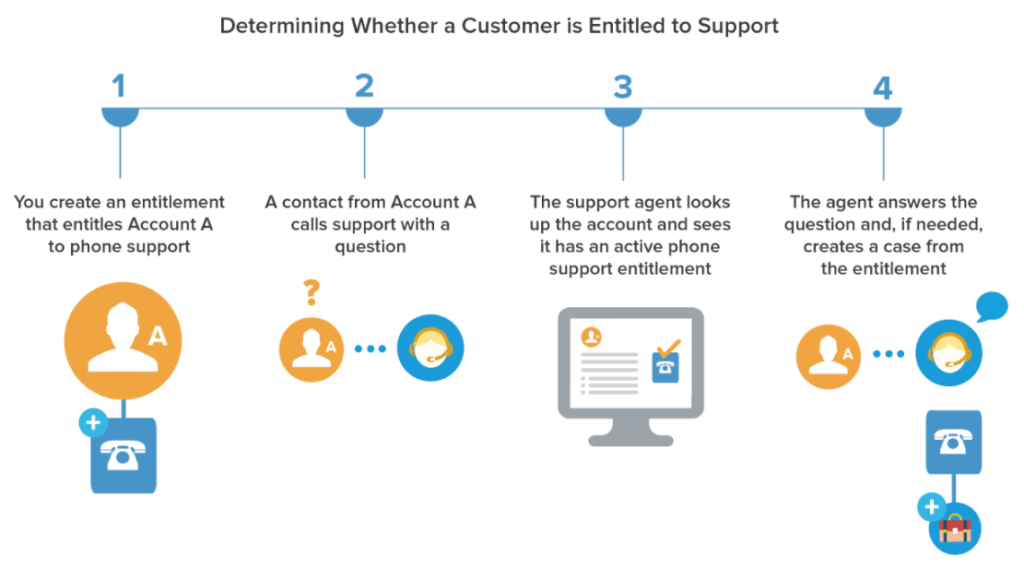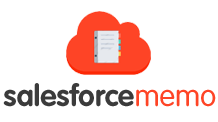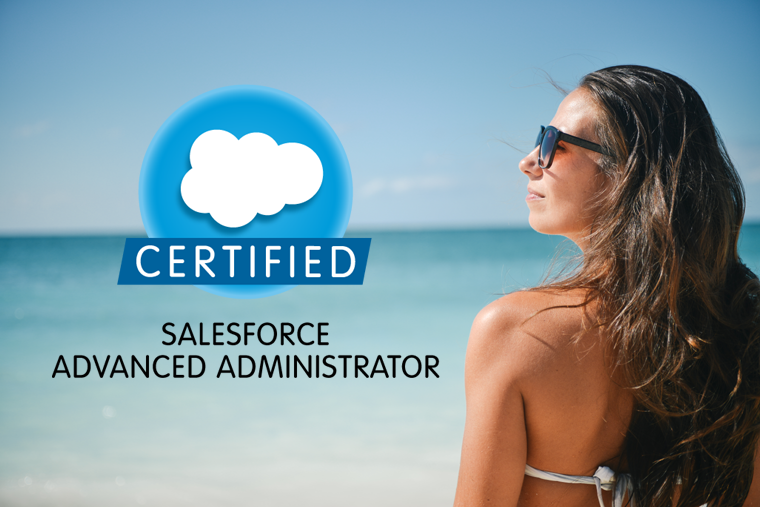How to Prepare For and PASS Advanced Administrator Exam
I’ve just passed my Salesforce Advanced Administrator exam yesterday and I wanted to share some insights about the exam.
As name indicates is more sophisticated version of the Administrator exam (ADM 201). It encompasses topics from Sales Cloud, Service Cloud and standard Salesforce. There is no surprise about form of the exam – 65 multiple-choice questions in a 90 minutes slot. Again, as I’ve mentioned in the previous article about passing Sales Cloud exam – if you want to stand out from a crowd you have to think seriously about this exam. There are already miriad of guys holding Admin and Dev certificates so I recommend you aim higher.
There are couple of topics that are repeating like mantra throughout the exam. Let’s go through them in the following sections:
- Deployment
There are couple of questions concerning creating and uploading change sets between environments. You have to be aware of cloning change sets and ways to monitor deployment once uploaded to the target environment.
More:
https://help.salesforce.com/HTViewHelpDoc?id=deploy_monitoring.htm&language=en_US
https://help.salesforce.com/apex/HTViewHelpDoc?id=changesets.htm&language=en
Be aware of the other ways how to move metadata between different environments (Force.com IDE, Migration tools).
 How do you move components from one sandbox to another? (choose 3)
How do you move components from one sandbox to another? (choose 3)
A. Force.com IDE
B. Migration tool
C. Data loader
D. Change Sets
- Order of execution
You have to know when workflows are triggered, when before/after triggers are executed etc.
1. Old record loaded from database (or initialized for new inserts)
2. New record values overwrite old values
3. System Validation Rules (If inserting Opportunity Products, Custom Validation Rules will also fire in addition to System Validation Rules)
4. All Apex before triggers (EE / UE only)
5. Custom Validation Rules
6. Record saved to database (but not committed)
7. Record reloaded from database
8. All Apex after triggers (EE / UE only)
9. Assignment rules
10. Auto-response rules
11. Workflow rules
12. Processes
13. Escalation rules
14. Parent Rollup Summary Formula value updated (if present)
15. Database commit
16. Post-commit logic (sending email)
 Select the correct order of execution for application of salesforce logic to records.
Select the correct order of execution for application of salesforce logic to records.
1 Apex before triggers
2 Apex after triggers
3 System validations
4 Workflow Rules
A. 1-2-3-4
B. 3-1-2-4
C. 3-4-1-2
D. 1-2-4-3
- Sharing, Security & Access
In the study guide that’s the biggest group with a massive 20% weightning. Revise concepts like Field Level Security, Hierarchies, Manual Sharing, Public vs Private sharing model, Permission sets, Profiles, Territories.
 An administrator notices there are too many duplicate records, numerous sharing rules, and a large number of manually shared records. Which situation may this be a symptom of?
An administrator notices there are too many duplicate records, numerous sharing rules, and a large number of manually shared records. Which situation may this be a symptom of?
A. A role hierarchy that has too few roles.
B. A sharing model that is too public.
C. A sharing model that is too private.
D. Object permissions on profiles that are too restrictive.
 In Salesforce Territory Management, which statement describes how a territory hierarchy is different from a role hierarchy?
In Salesforce Territory Management, which statement describes how a territory hierarchy is different from a role hierarchy?
A. A territory hierarchy grants login access to all users in a territory.
B. A territory hierarchy supports assigning users to multiple territories.
C. A territory hierarchy automatically assigns users to sales teams in the territory.
D. A territory hierarchy gives users in a territory full edit access to all accounts in that territory.
 An administrator wrote a field update action for a workflow rule on a field that is hidden via Field- Level Security. When the workflow rule triggers, what happens to the data in the hidden field?
An administrator wrote a field update action for a workflow rule on a field that is hidden via Field- Level Security. When the workflow rule triggers, what happens to the data in the hidden field?
A. The field will fail to update and remain in its original state.
B. The field is updated, even though it is hidden.
C. The field will only update if the rule was triggered by a time-based trigger.
D. The field will only update if the user has “Modify All Data” enabled in the profile.
Choose 2 differences between Role Hierarchy and Territory Management
– User can be part of multiple Territories and only one Role
- Delegated Administration
I think there were around 5 questions about that. Almost all of them formulated in the similiar manner – admin is too busy, how he can grant sales user permissions to reset passwords / add picklist to some objects…
More:
https://help.salesforce.com/apex/HTViewHelpDoc?id=admin_delegate.htm

The Salesforce administrator would like to allow another user to create default opportunity teams.
A. Create a permission set and assign the user
B. Assign the user to a custom profile that has this permission
C. Assign the user to a delegated administration group that has this permission
D. It is not possible to allow non administrator users to do this
- Entitlements

I think that is main topic from Service Cloud. Read section about Milestones as well.
Entitlements do the following:
– Define service levels of support
– Manage entitlements and service contracts
– Verify if customers are eligible for support
– Enforce levels via automated processes
More:
http://resources.docs.salesforce.com/202/14/en-us/sfdc/pdf/salesforce_entitlements_implementation_guide.pdf
https://help.salesforce.com/HTViewHelpDoc?id=entitlements_setting_up.htm
 Q: What permissions are needed for enabling Entitlements?
Q: What permissions are needed for enabling Entitlements?
– Manage Entitlements
– Customize Application
- Auditing and Monitoring
Main auditing features:
– Setup Audit Trail (check how SF configuration was changed and by whom)
– Login History
– Record modification fields (Created by & Modified by)
– Field history tracking (Up to 20 fields per object)
- Content Management
More:
http://www.salesforce.com/eu/sales-cloud/file-content-libraries.jsp
 Q: A user has had their “Create content packs” permission removed, what actions could they still perform on the ccontent?
Q: A user has had their “Create content packs” permission removed, what actions could they still perform on the ccontent?
A: Edit the title and description
Q: A user with the Salesforce Content checkbox checked on their user record cannot access a library, how would you resolve this?
A: Check permissions on library
More:
https://help.salesforce.com/apex/HTViewHelpDoc?id=collab_files_differences.htm
- Approval Processes

An approval process automates how records are approved in Salesforce. An approval process specifies each step of approval, including who to request approval from and what to do at each point of the process.
More:
https://help.salesforce.com/apex/HTViewHelpDoc?id=what_are_approvals.htm&language=en
 Q: A user has requested approval from his manager. This has not been received by the manager, how would you debug this?
Q: A user has requested approval from his manager. This has not been received by the manager, how would you debug this?
A: Email Log
e
- Debugging
Each debug level includes one of the following log levels for each log category. The levels are listed from lowest to highest.Specific events are logged based on the combination of category and levels. Most events start being logged at the INFO level. The level is cumulative, that is, if you select FINE, the log also includes all events logged at the DEBUG, INFO, WARN, and ERROR levels
• NONE
• ERROR
• WARN
• INFO
• DEBUG
• FINE
• FINER
• FINEST
 Which scenario would print a debug statement as fast as possible?
Which scenario would print a debug statement as fast as possible?
A. Go to developer console, set logging to FINEST and run apex.
B. Go to developer console, set logging to ERROR and run apex.
C. Go to developer console, set logging to WARN and run apex.
D. Go to developer console, set logging to DEBUG and run apex.
More:
https://developer.salesforce.com/docs/atlas.en-us.apexcode.meta/apexcode/apex_debugging_system_log_console.htm
- Reporting
Analytical snaphots allow you to load data from a Custom Report to a Custom Object on a regularly scheduled basis. This in turn allows you to create Reports and Dashboards based on the data in the Custom Object.
Analytic Snapshots are comprised of three things:
A source Report – Tabular or Summary
A Custom Object with fields matching the columns in the source Report
An Analytic Snapshot definition, which maps fields and schedules the snapshot runs
More:
http://help.salesforce.com/apex/HTViewHelpDoc?id=data_setting_up_analytic_snap.htm
 Q: Manager has requested a dashboard showing how many outstanding cases there are each day at 5pm, how would you create this?
Q: Manager has requested a dashboard showing how many outstanding cases there are each day at 5pm, how would you create this?
A: Analytical Snapshot
Cross Filters
Use a cross filter to fine-tune your results by including or excluding records from related objects, without having to write formulas or code. You can apply cross filters by themselves, or in combination with field filters.
More:
https://help.salesforce.com/HTViewHelpDoc?id=reports_cross_filters.htm
 Q: What type of report would show accounts with no closed/won opportunities?
Q: What type of report would show accounts with no closed/won opportunities?
A: Report using Cross filters



Very helpful …
Thanks a million. This is a great article with great insights.
Regarding the question, “Which scenario would print a debug statement as fast as possible?”:
Wouldn’t running at “Finest” take the longest?
Yeah, you are absolutely right. I’ve just changed for correct answer. Thanks for pointing that out!